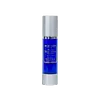What's inside
What's inside
 Key Ingredients
Key Ingredients

 Benefits
Benefits

 Concerns
Concerns

 Ingredients Side-by-side
Ingredients Side-by-side

Water
Skin ConditioningGlycerin
HumectantDimethicone
EmollientDimethyl Isosorbide
SolventButylene Glycol
HumectantUndecane
EmollientArginine
MaskingInulin
Skin ConditioningMicrocrystalline Cellulose
AbsorbentCeteareth-20
CleansingTridecane
PerfumingTocopherol
AntioxidantHydroxyacetophenone
AntioxidantSodium Hyaluronate
HumectantPalmitoyl Tripeptide-38
Skin ConditioningPanthenol
Skin ConditioningCaprylic/Capric Triglyceride
MaskingPalmitoyl Tripeptide-5
Skin ConditioningPolyacrylate Crosspolymer-6
Emulsion StabilisingPalmitoyl Tripeptide-1
Skin ConditioningPullulan
Tetrapeptide-21
Skin ConditioningPalmitoyl Tetrapeptide-10
Skin ConditioningPalmitoyl Tetrapeptide-7
Skin ConditioningAmmonium Polyacryloyldimethyl Taurate
Emulsion StabilisingGlyceryl Linoleate
EmollientAcetyl Hexapeptide-8
HumectantPentapeptide-18
Skin ConditioningOligopeptide-1
Skin ConditioningArginine/Lysine Polypeptide
Skin ConditioningSucrose Palmitate
EmollientCetyl Palmitate
EmollientPhenoxyethanol
PreservativeEthylhexylglycerin
Skin ConditioningCarbomer
Emulsion StabilisingCopper Palmitoyl Heptapeptide-14
Skin ConditioningHeptapeptide-15 Palmitate
Skin ConditioningBenzotriazolyl Dodecyl P-Cresol
UV AbsorberPolysorbate 80
EmulsifyingSorbitan Stearate
EmulsifyingPolysorbate 20
EmulsifyingCarnosine
Skin ConditioningSodium Metabisulfite
AntioxidantDunaliella Salina Extract
Skin ConditioningHelianthus Annuus Seed Oil
EmollientHydroxypropyl Cyclodextrin
MaskingDimethicone/Vinyl Dimethicone Crosspolymer
Skin ConditioningSodium Benzoate
MaskingHydrogenated Lecithin
EmulsifyingCaprylyl Glycol
EmollientPantolactone
HumectantXanthan Gum
EmulsifyingDisodium EDTA
T-Butyl Alcohol
PerfumingPotassium Sorbate
PreservativeCitric Acid
BufferingGlyceryl Caprylate
EmollientLactic Acid/Glycolic Acid Copolymer
Skin ConditioningPolyvinyl Alcohol
Phenylpropanol
MaskingWater, Glycerin, Dimethicone, Dimethyl Isosorbide, Butylene Glycol, Undecane, Arginine, Inulin, Microcrystalline Cellulose, Ceteareth-20, Tridecane, Tocopherol, Hydroxyacetophenone, Sodium Hyaluronate, Palmitoyl Tripeptide-38, Panthenol, Caprylic/Capric Triglyceride, Palmitoyl Tripeptide-5, Polyacrylate Crosspolymer-6, Palmitoyl Tripeptide-1, Pullulan, Tetrapeptide-21, Palmitoyl Tetrapeptide-10, Palmitoyl Tetrapeptide-7, Ammonium Polyacryloyldimethyl Taurate, Glyceryl Linoleate, Acetyl Hexapeptide-8, Pentapeptide-18, Oligopeptide-1, Arginine/Lysine Polypeptide, Sucrose Palmitate, Cetyl Palmitate, Phenoxyethanol, Ethylhexylglycerin, Carbomer, Copper Palmitoyl Heptapeptide-14, Heptapeptide-15 Palmitate, Benzotriazolyl Dodecyl P-Cresol, Polysorbate 80, Sorbitan Stearate, Polysorbate 20, Carnosine, Sodium Metabisulfite, Dunaliella Salina Extract, Helianthus Annuus Seed Oil, Hydroxypropyl Cyclodextrin, Dimethicone/Vinyl Dimethicone Crosspolymer, Sodium Benzoate, Hydrogenated Lecithin, Caprylyl Glycol, Pantolactone, Xanthan Gum, Disodium EDTA, T-Butyl Alcohol, Potassium Sorbate, Citric Acid, Glyceryl Caprylate, Lactic Acid/Glycolic Acid Copolymer, Polyvinyl Alcohol, Phenylpropanol
 Reviews
Reviews

Ingredients Explained
These ingredients are found in both products.
Ingredients higher up in an ingredient list are typically present in a larger amount.
Butylene Glycol (or BG) is used within cosmetic products for a few different reasons:
Overall, Butylene Glycol is a safe and well-rounded ingredient that works well with other ingredients.
Though this ingredient works well with most skin types, some people with sensitive skin may experience a reaction such as allergic rashes, closed comedones, or itchiness.
Learn more about Butylene GlycolGlycerin is already naturally found in your skin. It helps moisturize and protect your skin.
A study from 2016 found glycerin to be more effective as a humectant than AHAs and hyaluronic acid.
As a humectant, it helps the skin stay hydrated by pulling moisture to your skin. The low molecular weight of glycerin allows it to pull moisture into the deeper layers of your skin.
Hydrated skin improves your skin barrier; Your skin barrier helps protect against irritants and bacteria.
Glycerin has also been found to have antimicrobial and antiviral properties. Due to these properties, glycerin is often used in wound and burn treatments.
In cosmetics, glycerin is usually derived from plants such as soybean or palm. However, it can also be sourced from animals, such as tallow or animal fat.
This ingredient is organic, colorless, odorless, and non-toxic.
Glycerin is the name for this ingredient in American English. British English uses Glycerol/Glycerine.
Learn more about GlycerinPhenoxyethanol is a preservative that has germicide, antimicrobial, and aromatic properties. Studies show that phenoxyethanol can prevent microbial growth. By itself, it has a scent that is similar to that of a rose.
It's often used in formulations along with Caprylyl Glycol to preserve the shelf life of products.
Polysorbate 20 is made by combining ethoxylation of sorbitan, ethylene oxide, and lauric acid. It is a mild cleansing agent, surfactant, and emulsifier.
As a surfactant, it helps collect dirt and oils for washing. Emulsifiers prevent oils and water from separating.
Polysorbate 20 also adds scent to a product. Since it is made using sorbitol, it has a sweet scent. Sorbitol can also be found in fruits such as apples and peaches.
The lauric acid used to create Polysorbate 20 is often derived from coconuts.
Polysorbate 20 may not be fungal acne safe.
Learn more about Polysorbate 20Polysorbate 80 is a surfactant and emulsifier. It is used to keep ingredients together, and prevent oils and waters from separating.
It is made from polyethoxylated sorbitan and oleic acid. This ingredient can be found in cosmetics, foods, and medicine. It is water-soluble.
Polysorbate 80 may not be fungal acne safe.
Learn more about Polysorbate 80Water. It's the most common cosmetic ingredient of all. You'll usually see it at the top of ingredient lists, meaning that it makes up the largest part of the product.
So why is it so popular? Water most often acts as a solvent - this means that it helps dissolve other ingredients into the formulation.
You'll also recognize water as that liquid we all need to stay alive. If you see this, drink a glass of water. Stay hydrated!
Learn more about Water